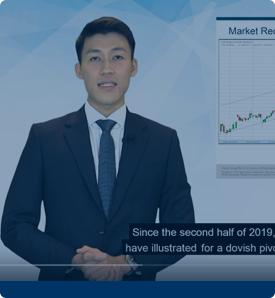Base currency
Table of Contents
Base currency
Trading in the foreign exchange market involves buying one currency and selling another in pairs. The base currency is the first of the two currencies in a team, and the quote currency is the second. It evaluates the worth of two coins, i.e., the base currency and the quote currency.
The base currency in forex is the amount of the quoted cash required to buy one unit of the base currency. For instance, if you were looking at the CAD/USD currency pair, the Canadian dollar would be the base currency, and the US dollar would be the quote currency.
What is base currency?
Prices for individual currency units are offered as currency pairs on the forex market. A currency pair quotation always starts with the base currency, the transaction currency, and ends with the quote currency, also known as the counter currency. A company may reflect all gains and losses in its accounting by using the base currency as domestic or accounting currency.
Understanding a base currency
All forex transactions require the simultaneous buying and selling of two different currencies, but the currency pair itself can be viewed as a single instrument that can be bought or sold. You purchase the base currency and sell the quote currency when buying a currency pair from a forex broker.
On the other hand, if you sell the currency pair, you receive the quote currency instead of the base currency. Base currencies are present in currency transactions since a currency pair is constantly exchanged. A trader who purchases US dollars using sterling buys USD and sells GBP.
Currency pairings appeal to businesses that operate abroad and transact in different currencies. The USD/GBP or GBP/USD currency combination is useful for a British company that transacts business in US dollars.
Factors that impact base currency
The following are the factors that impact base currency:
- Currency exchange rates and currency pairs fluctuate due to changes in market inflation. The value of a nation’s currency will rise if its inflation rate is lower than that of another. Where inflation is low, prices of products and services rise more slowly. While a nation with higher inflation normally experiences currency depreciation and higher interest rates, a country with persistently lower inflation typically sees growing currency values.
- Interest rates will likely drop in a recession, making it harder for the nation to attract foreign investment. As a result, its base currency loses purchasing power against the currencies of other countries, which lowers the exchange rate.
- Currency value and the dollar exchange rate are affected by changes in interest rates. Interest rates, foreign exchange rates, and inflation are all interconnected. As higher interest rates provide lenders higher rates, which attracts more foreign money and raises exchange rates, a country’s currency gains value in reaction to increases in interest rates.
- Government debt decreases a nation’s ability to attract foreign investment, which increases inflation. Foreign investors will sell their bonds on the open market if the market anticipates government debt in a particular country. The value of its base currency will consequently decline.
Base currency examples
The idea of the base currency is understood from the following example.
In 2023, Jin has plans for a vacation in New York. He is an English resident who exclusively carries pounds sterling. He thus visits the currency exchange with the intention of converting his GBP to USD. According to the store assistant, the exchange rate is GBP/CAD = 0.82. That indicates that 0.82 GBP is equal to 1 US$.
In our illustration, the quotation currency is GBP, and the base currency is USD. As a result, Johnny may swap £ 0.82 GBP for 1 US$ at the currency exchange.
Working of base currency
In currency trading, you buy the base currency and sell the other. Local changes in interest rates, trade imbalances, and economic expansion can make one currency more preferred. Trading occurs in off-exchange marketplaces and regulated exchanges known as forex (short for “foreign exchange”).
“Pips,” total quotation units, are used for currency pairs. A pip is the fourth digit in a quote following the decimal point and represents.01% of one team of money. Currency pairings have bid-ask prices, just like stocks. The customer pays the required price, and the vendor receives the bid amount. The market maker receives payment for the spread, the difference between the two prices.
Exchanges compete on spread costs to draw customers. The minimum investment for trading is 100,000 units of the base currency, a sizable sum. Yet, the minimum margin needed to trade in cash can be as low as 2%, depending on the currency pair.
Frequently Asked Questions
The quote currency can be defined as the second currency in a currency pair, and it is the one that is quoted with the base currency. For example, in the AUD/USD currency pair, the AUD is the base currency, and the USD is the quote currency. The quote currency is also sometimes referred to as the counter currency. The base currency is also sometimes referred to as the primary currency.
Base Currency Equivalent is the quantity of the pertinent currency needed to acquire the relevant US Dollars at the agent’s spot exchange rate.
A currency pair is a quotation of two distinct currencies, with the two values mentioned. When a currency pair order is made, the first listed currency, the base currency, is purchased, and the second listed currency, the quote currency, is sold. The currency pair EUR/USD is the most liquid globally. The second most recognised currency pair globally is USD/JPY.
Exotic base currencies are those seldom used in international financial transactions and with little volume on foreign currency markets. Exotic currencies are typically from countries with emerging economies or that are considered to be high-risk. They are hence often more volatile than other big currencies. Exotic base currencies are typically less liquid than major currencies, making them more difficult to convert into other currencies.
Base and quote currencies are used to calculate the currency pair’s value and make trading decisions.
Related Terms
- Cost of Equity
- Capital Adequacy Ratio (CAR)
- Interest Coverage Ratio
- Industry Groups
- Income Statement
- Historical Volatility (HV)
- Embedded Options
- Dynamic Asset Allocation
- Depositary Receipts
- Deferment Payment Option
- Debt-to-Equity Ratio
- Financial Futures
- Contingent Capital
- Conduit Issuers
- Calendar Spread
- Cost of Equity
- Capital Adequacy Ratio (CAR)
- Interest Coverage Ratio
- Industry Groups
- Income Statement
- Historical Volatility (HV)
- Embedded Options
- Dynamic Asset Allocation
- Depositary Receipts
- Deferment Payment Option
- Debt-to-Equity Ratio
- Financial Futures
- Contingent Capital
- Conduit Issuers
- Calendar Spread
- Devaluation
- Grading Certificates
- Distributable Net Income
- Cover Order
- Tracking Index
- Auction Rate Securities
- Arbitrage-Free Pricing
- Net Profits Interest
- Borrowing Limit
- Algorithmic Trading
- Corporate Action
- Spillover Effect
- Economic Forecasting
- Treynor Ratio
- Hammer Candlestick
- DuPont Analysis
- Net Profit Margin
- Law of One Price
- Annual Value
- Rollover option
- Financial Analysis
- Currency Hedging
- Lump sum payment
- Annual Percentage Yield (APY)
- Excess Equity
- Fiduciary Duty
- Bought-deal underwriting
- Anonymous Trading
- Fair Market Value
- Fixed Income Securities
- Redemption fee
- Acid Test Ratio
- Bid Ask price
- Finance Charge
- Futures
- Basis grades
- Short Covering
- Visible Supply
- Transferable notice
- Intangibles expenses
- Strong order book
- Fiat money
- Trailing Stops
- Exchange Control
- Relevant Cost
- Dow Theory
- Hyperdeflation
- Hope Credit
- Futures contracts
- Human capital
- Subrogation
- Qualifying Annuity
- Strategic Alliance
- Probate Court
- Procurement
- Holding company
- Harmonic mean
- Income protection insurance
- Recession
- Savings Ratios
- Pump and dump
- Total Debt Servicing Ratio
- Debt to Asset Ratio
- Liquid Assets to Net Worth Ratio
- Liquidity Ratio
- Personal financial ratios
- T-bills
- Payroll deduction plan
- Operating expenses
- Demand elasticity
- Deferred compensation
- Conflict theory
- Acid-test ratio
- Withholding Tax
- Benchmark index
- Double Taxation Relief
- Debtor Risk
- Securitization
- Yield on Distribution
- Currency Swap
- Overcollateralization
- Efficient Frontier
- Listing Rules
- Green Shoe Options
- Accrued Interest
- Market Order
- Accrued Expenses
- Target Leverage Ratio
- Acceptance Credit
- Balloon Interest
- Abridged Prospectus
- Data Tagging
- Perpetuity
- Hybrid annuity
- Investor fallout
- Intermediated market
- Information-less trades
- Back Months
- Adjusted Futures Price
- Expected maturity date
- Excess spread
- Quantitative tightening
- Accreted Value
- Equity Clawback
- Soft Dollar Broker
- Stagnation
- Replenishment
- Decoupling
- Holding period
- Regression analysis
- Wealth manager
- Financial plan
- Adequacy of coverage
- Actual market
- Credit risk
- Insurance
- Financial independence
- Annual report
- Financial management
- Ageing schedule
- Global indices
- Folio number
- Accrual basis
- Liquidity risk
- Quick Ratio
- Unearned Income
- Sustainability
- Value at Risk
- Vertical Financial Analysis
- Residual maturity
- Operating Margin
- Trust deed
- Profit and Loss Statement
- Junior Market
- Affinity fraud
- Working capital
- Individual Savings Account
- Redemption yield
- Net profit margin
- Fringe benefits
- Fiscal policy
- Escrow
- Externality
- Multi-level marketing
- Joint tenancy
- Liquidity coverage ratio
- Hurdle rate
- Kiddie tax
- Giffen Goods
- Keynesian economics
- EBITA
- Risk Tolerance
- Disbursement
- Bayes’ Theorem
- Amalgamation
- Adverse selection
- Contribution Margin
- Accounting Equation
- Value chain
- Gross Income
- Net present value
- Liability
- Leverage ratio
- Inventory turnover
- Gross margin
- Collateral
- Being Bearish
- Being Bullish
- Commodity
- Exchange rate
- Basis point
- Inception date
- Riskometer
- Trigger Option
- Zeta model
- Racketeering
- Market Indexes
- Short Selling
- Quartile rank
- Defeasance
- Cut-off-time
- Business-to-Consumer
- Bankruptcy
- Acquisition
- Turnover Ratio
- Indexation
- Fiduciary responsibility
- Benchmark
- Pegging
- Illiquidity
- Backwardation
- Backup Withholding
- Buyout
- Beneficial owner
- Contingent deferred sales charge
- Exchange privilege
- Asset allocation
- Maturity distribution
- Letter of Intent
- Emerging Markets
- Consensus Estimate
- Cash Settlement
- Cash Flow
- Capital Lease Obligations
- Book-to-Bill-Ratio
- Capital Gains or Losses
- Balance Sheet
- Capital Lease
Most Popular Terms
Other Terms
- Compound Yield
- Brokerage Account
- Discretionary Accounts
- Industry Groups
- Growth Rate
- Green Bond Principles
- Gamma Scalping
- Funding Ratio
- Free-Float Methodology
- Foreign Direct Investment (FDI)
- Floating Dividend Rate
- Flight to Quality
- Real Return
- Protective Put
- Perpetual Bond
- Option Adjusted Spread (OAS)
- Non-Diversifiable Risk
- Merger Arbitrage
- Liability-Driven Investment (LDI)
- Income Bonds
- Guaranteed Investment Contract (GIC)
- Flash Crash
- Equity Carve-Outs
- Cost Basis
- Deferred Annuity
- Cash-on-Cash Return
- Earning Surprise
- Bubble
- Beta Risk
- Bear Spread
- Asset Play
- Accrued Market Discount
- Ladder Strategy
- Junk Status
- Intrinsic Value of Stock
- Interest-Only Bonds (IO)
- Inflation Hedge
- Incremental Yield
- Industrial Bonds
- Holding Period Return
- Hedge Effectiveness
- Flat Yield Curve
- Fallen Angel
- Exotic Options
- Execution Risk
- Exchange-Traded Notes
- Event-Driven Strategy
- Eurodollar Bonds
- Enhanced Index Fund
- EBITDA Margin
Know More about
Tools/Educational Resources
Markets Offered by POEMS
Read the Latest Market Journal
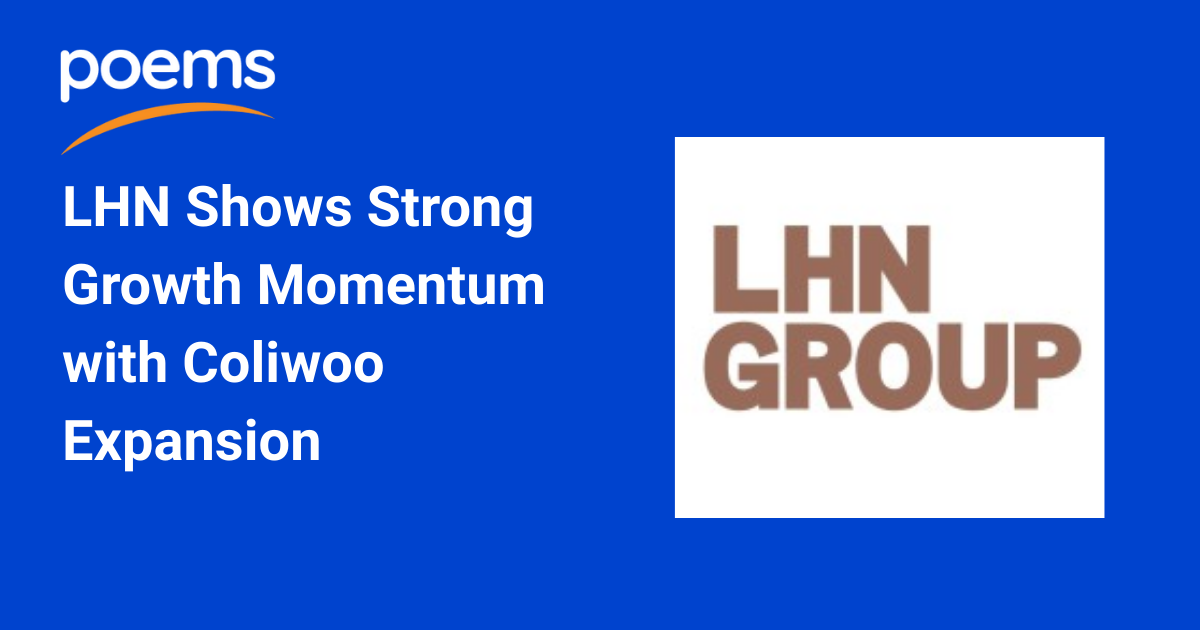
LHN Reports Strong Growth Momentum Driven by Coliwoo Expansion
Company Overview LHN Ltd is a Singapore-based company operating in the co-living and property development sectors. Through its Coliwoo brand, the company has positioned itself as a key player in the growing co-living market, while also maintaining interests in property development and other business segments. Strong Financial Performance Drives Optimism LHN Ltd delivered impressive results in the second half of 2025, with earnings exceeding Phillip Securities Research's expectations. The company's full-year 2025 revenue and profit after tax and minority interests reached 100% and 109% of forecasts, respectively. This strong showing was primarily driven by a substantial jump in co-living earnings, highlighting the company's strategic focus on this growing market segment. The company also announced an increase in dividend distribution, with final and special dividends totalling S$0.03, up from S$0.02 in the previous fiscal year. Aggressive Expansion Plans for Coliwoo The expansion trajectory for LHN's Coliwoo co-living platform remains exceptionally strong, with significant room inventory growth on the horizon. Currently, 714 rooms are undergoing renovation, with an additional 1,500 rooms in the planning pipeline. This expansion represents a remarkable 75% increase from the existing base of 2,933 rooms. The company has identified diverse opportunities across multiple property types, including hotel licenses, student accommodations, commercial buildings, and management contracts. LHN’s management has set an ambitious target of adding approximately 800 rooms annually, translating to a compound annual growth rate of around 27%. Investment Recommendation and Valuation Phillip Securities Research maintains a BUY recommendation for LHN Ltd, though it has adjusted its valuation methodology following the listing of Coliwoo. The research team now employs a sum-of-parts valuation approach, moving away from its previous 13 times price-to-earnings ratio method. Under this new framework, Coliwoo is valued on a mark-to-market basis with a 10% discount, property development assets at book value, and other remaining business operations at 10 times price-to-earnings. The target price has been revised from S$1.13 to S$0.85. Despite this adjustment, the investment case remains compelling, supported by higher expected dividend yields and new growth areas, including storage space and facilities management businesses. The stock offers attractive valuations with a dividend yield near 6% and an adjusted price-to-book ratio of 0.9 times. This article has been auto-generated using PhillipGPT. It is based on a report by a Phillip Securities Research analyst. Disclaimer These commentaries are intended for general circulation and do not have regard to the specific investment objectives, financial situation and particular needs of any person. Accordingly, no warranty whatsoever is given and no liability whatsoever is accepted for any loss arising whether directly or indirectly as a result of any person acting based on this information. You should seek advice from a financial adviser regarding the suitability of any investment product(s) mentioned herein, taking into account your specific investment objectives, financial situation or particular needs, before making a commitment to invest in such products. Opinions expressed in these commentaries are subject to change without notice. Investments are subject to investment risks including the possible loss of the principal amount invested. The value of units in any fund and the income from them may fall as well as rise. Past performance figures as well as any projection or forecast used in these commentaries are not necessarily indicative of future or likely performance. Phillip Securities Pte Ltd (PSPL), its directors, connected persons or employees may from time to time have an interest in the financial instruments mentioned in these commentaries. The information contained in these commentaries has been obtained from public sources which PSPL has no reason to believe are unreliable and any analysis, forecasts, projections, expectations and opinions (collectively the “Research”) contained in these commentaries are based on such information and are expressions of belief only. PSPL has not verified this information and no representation or warranty, express or implied, is made that such information or Research is accurate, complete or verified or should be relied upon as such. Any such information or Research contained in these commentaries are subject to change, and PSPL shall not have any responsibility to maintain the information or Research made available or to supply any corrections, updates or releases in connection therewith. In no event will PSPL be liable for any special, indirect, incidental or consequential damages which may be incurred from the use of the information or Research made available, even if it has been advised of the possibility of such damages. The companies and their employees mentioned in these commentaries cannot be held liable for any errors, inaccuracies and/or omissions howsoever caused. Any opinion or advice herein is made on a general basis and is subject to change without notice. The information provided in these commentaries may contain optimistic statements regarding future events or future financial performance of countries, markets or companies. You must make your own financial assessment of the relevance, accuracy and adequacy of the information provided in these commentaries. Views and any strategies described in these commentaries may not be suitable for all investors. Opinions expressed herein may differ from the opinions expressed by other units of PSPL or its connected persons and associates. Any reference to or discussion of investment products or commodities in these commentaries is purely for illustrative purposes only and must not be construed as a recommendation, an offer or solicitation for the subscription, purchase or sale of the investment products or commodities mentioned. This advertisement has not been reviewed by the Monetary Authority of Singapore.

Frasers Property Limited: Value Yet to Be Recognised
Strategic Property Development Across Key Markets Frasers Property Limited (FPL) continues to demonstrate its strategic positioning across diverse property sectors through its recent showcase at Frasers Day Bangkok 2025. The company's portfolio spans industrial, residential, and mixed-use developments, highlighting its comprehensive approach to property development and investment. Key Development Projects Drive Growth The company's recent property visits revealed three flagship projects that exemplify FPL's development strategy. ARAYA – The Eastern Gateway This prime industrial-tech ecosystem is strategically located just 20 minutes from Suvarnabhumi Airport. This development features state-of-the-art infrastructure and comprehensive one-stop services designed to serve modern industries, positioning it as a key industrial hub in the region. GUTE Sukhumvit 76 In the residential sector, GUTE Sukhumvit 76 showcases FPL's high-end development capabilities. This premium residential project comprises 118 detached and semi-detached units across 5.36 hectares, offering spacious layouts and community amenities that cater to upscale suburban living preferences. One Bangkok The crown jewel of FPL's portfolio is One Bangkok, a fully integrated mixed-use district spanning 17 hectares. This comprehensive development features luxury residences, Grade-A offices, diverse retail concepts, hotels, and cultural spaces, representing the company's ability to create vibrant urban ecosystems. Capital Recycling Strategy Addresses Valuation Gap Capital recycling remains a central focus for FPL as the company works to address its significant 57% discount to book value. The group has actively recycled capital into its listed REITs in both Singapore and Thailand, as well as to third parties, with the dual objectives of unlocking value and reducing net debt-to-equity, which currently stands at 89.2% as of September 30, 2025. In FY25, FPL executed S$1.4 billion in divestments, with 45% of proceeds recycled into its listed REITs. The company's key earnings drivers include building its development pipeline through high-quality land acquisitions and strong sell-through rates, the continued ramp-up of One Bangkok, unlocking value through strategic asset recycling, and strengthening recurring fee-based income streams. FPL maintained its commitment to shareholders by paying 4.5 cents per share in dividends in FY25, delivering a dividend yield of 4.4%, while pursuing its broader strategic transformation initiatives. Conclusion As FPL advances its pipeline and unlocks value through targeted recycling efforts, the group continues to demonstrate its ability to create resilient income streams and high-impact landmark developments. With a strengthened balance sheet, expanding development momentum, and iconic projects like One Bangkok setting new benchmarks in urban living, FPL is charting a path of sustained growth. Investors can look forward to a company progressively closing its valuation gap while driving long-term value across multiple real estate sectors. This article has been auto-generated using PhillipGPT. It is based on a report by a Phillip Securities Research analyst. Reference URL https://www.poems.com.sg/stock-research/FCPTA.SG/ Disclaimer These commentaries are intended for general circulation and do not have regard to the specific investment objectives, financial situation and particular needs of any person. Accordingly, no warranty whatsoever is given and no liability whatsoever is accepted for any loss arising whether directly or indirectly as a result of any person acting based on this information. You should seek advice from a financial adviser regarding the suitability of any investment product(s) mentioned herein, taking into account your specific investment objectives, financial situation or particular needs, before making a commitment to invest in such products. Opinions expressed in these commentaries are subject to change without notice. Investments are subject to investment risks including the possible loss of the principal amount invested. The value of units in any fund and the income from them may fall as well as rise. Past performance figures as well as any projection or forecast used in these commentaries are not necessarily indicative of future or likely performance. Phillip Securities Pte Ltd (PSPL), its directors, connected persons or employees may from time to time have an interest in the financial instruments mentioned in these commentaries. The information contained in these commentaries has been obtained from public sources which PSPL has no reason to believe are unreliable and any analysis, forecasts, projections, expectations and opinions (collectively the “Research”) contained in these commentaries are based on such information and are expressions of belief only. PSPL has not verified this information and no representation or warranty, express or implied, is made that such information or Research is accurate, complete or verified or should be relied upon as such. Any such information or Research contained in these commentaries are subject to change, and PSPL shall not have any responsibility to maintain the information or Research made available or to supply any corrections, updates or releases in connection therewith. In no event will PSPL be liable for any special, indirect, incidental or consequential damages which may be incurred from the use of the information or Research made available, even if it has been advised of the possibility of such damages. The companies and their employees mentioned in these commentaries cannot be held liable for any errors, inaccuracies and/or omissions howsoever caused. Any opinion or advice herein is made on a general basis and is subject to change without notice. The information provided in these commentaries may contain optimistic statements regarding future events or future financial performance of countries, markets or companies. You must make your own financial assessment of the relevance, accuracy and adequacy of the information provided in these commentaries. Views and any strategies described in these commentaries may not be suitable for all investors. Opinions expressed herein may differ from the opinions expressed by other units of PSPL or its connected persons and associates. Any reference to or discussion of investment products or commodities in these commentaries is purely for illustrative purposes only and must not be construed as a recommendation, an offer or solicitation for the subscription, purchase or sale of the investment products or commodities mentioned. This advertisement has not been reviewed by the Monetary Authority of Singapore.
Semiconductor Sector Shows Strong Recovery in Q3 2025
Revenue Growth Signals Market Turnaround The semiconductor industry posted robust performance in the third quarter of 2025, with revenue surging 31% year over year to US$216 billion. This marked a significant acceleration from the second quarter's 27% growth, indicating a strengthening recovery trajectory for the sector. Profit after tax and minority interest (PATMI) rose even more dramatically, jumping 93% year-over-year to US$84 billion, representing the highest annual increase since the third quarter of 2024. Technology Transition Drives Growth The sector's strong performance was primarily driven by cloud service providers' strategic transition to cutting-edge technology solutions. Key drivers included the adoption of NVIDIA's Blackwell GB300 GPUs and AMD's MI350 series GPUs, as hyperscalers continued their aggressive capital expenditure programmes. This technological shift reflects the industry's ongoing evolution toward more advanced processing capabilities to meet growing computational demands. Competitive Dynamics in the GPU Market Despite intensifying competition, NVIDIA has maintained its dominant position in the GPU market with over 90% market share across the past two quarters. This resilience comes even as competitors offer compelling alternatives, with Google's TPU delivering an estimated 70% better performance per watt and a lower average selling price (~ 46%) than NVIDIA's Blackwell GPUs. Similarly, AMD's MI350 GPU provides approximately 11% better performance per watt and 29% lower pricing. However, NVIDIA's competitive advantage lies in its CUDA software ecosystem, which creates substantial switching costs for customers considering alternatives from AMD or Google. While competitive pricing may pressu margins, its CUDA software ecosystem continues to provide significant protection for its market position. Processor and Memory Outlook The processor and memory segments have experienced five consecutive quarters of decelerating growth since Q3 2024, with trailing twelve-month revenue growth moderating to 51% and 29% respectively. However, analysts believe this deceleration is approaching its trough, supported by hyperscalers' sustained 66% year-over-year capital expenditure growth in Q3 2025, following 65% and 62% growth in the previous quarters. This article has been auto-generated using PhillipGPT. It is based on a report by a Phillip Securities Research analyst. Reference URL https://www.poems.com.sg/stock-research/strategy-report/semiconductor-3q25-update-processor-and-memory-poised-for-growth-acceleration/ Disclaimer These commentaries are intended for general circulation and do not have regard to the specific investment objectives, financial situation and particular needs of any person. Accordingly, no warranty whatsoever is given and no liability whatsoever is accepted for any loss arising whether directly or indirectly as a result of any person acting based on this information. You should seek advice from a financial adviser regarding the suitability of any investment product(s) mentioned herein, taking into account your specific investment objectives, financial situation or particular needs, before making a commitment to invest in such products. Opinions expressed in these commentaries are subject to change without notice. Investments are subject to investment risks including the possible loss of the principal amount invested. The value of units in any fund and the income from them may fall as well as rise. Past performance figures as well as any projection or forecast used in these commentaries are not necessarily indicative of future or likely performance. Phillip Securities Pte Ltd (PSPL), its directors, connected persons or employees may from time to time have an interest in the financial instruments mentioned in these commentaries. The information contained in these commentaries has been obtained from public sources which PSPL has no reason to believe are unreliable and any analysis, forecasts, projections, expectations and opinions (collectively the “Research”) contained in these commentaries are based on such information and are expressions of belief only. PSPL has not verified this information and no representation or warranty, express or implied, is made that such information or Research is accurate, complete or verified or should be relied upon as such. Any such information or Research contained in these commentaries are subject to change, and PSPL shall not have any responsibility to maintain the information or Research made available or to supply any corrections, updates or releases in connection therewith. In no event will PSPL be liable for any special, indirect, incidental or consequential damages which may be incurred from the use of the information or Research made available, even if it has been advised of the possibility of such damages. The companies and their employees mentioned in these commentaries cannot be held liable for any errors, inaccuracies and/or omissions howsoever caused. Any opinion or advice herein is made on a general basis and is subject to change without notice. The information provided in these commentaries may contain optimistic statements regarding future events or future financial performance of countries, markets or companies. You must make your own financial assessment of the relevance, accuracy and adequacy of the information provided in these commentaries. Views and any strategies described in these commentaries may not be suitable for all investors. Opinions expressed herein may differ from the opinions expressed by other units of PSPL or its connected persons and associates. Any reference to or discussion of investment products or commodities in these commentaries is purely for illustrative purposes only and must not be construed as a recommendation, an offer or solicitation for the subscription, purchase or sale of the investment products or commodities mentioned. This advertisement has not been reviewed by the Monetary Authority of Singapore.

Salesforce Delivers Strong Performance with Informatica Acquisition Boost
Company Overview Salesforce Inc. is a leading cloud-based software company that provides customer relationship management (CRM) solutions and enterprise applications. Its comprehensive cloud computing services enables businesses across various industries manage customer interactions, sales processes, and marketing campaigns.. Strong Quarterly Results Exceed Expectations Salesforce delivered impressive third-quarter fiscal 2026 results, that met revenue expectations while significantly outperforming on earnings. The company's nine-month fiscal 2026 revenue reached 74% of its full-year forecast, while adjusted profit after tax and minority interests reached 80% of its annual projections. Earnings strength was driven by the delayed timing of expenses and improved bad-debt collections, which enhanced overall profitability. Informatica Acquisition Drives Guidance Upgrade The completion of Salesforce's acquisition of Informatica has provided a substantial boost to the company's growth trajectory. Management raised fourth-quarter fiscal 2026 guidance, with the completed Informatica deal contributing a significant three percentage points to revenue growth, bringing the total expected growth to 11-12%. Subscription and Support growth for fiscal 2026 also rose by 0.8 percentage points, resulting in a robust 10% year-over-year increase. Investment Recommendation and Valuation Phillip Securities Research maintains a BUY rating on Salesforce, raising its target price to US$382.00, up from US$364.00. This reflects upward adjustments of 1% to fiscal 2026 revenue and 5% adjusted profit forecasts, following the strong third-quarter results and upgraded guidance. The research firm's valuation methodology remains consistent, with weighted-average cost of capital at 8.4% and terminal growth at 6%. The adjusted fiscal 2026 forward price-to-earnings ratio of 22.7x offers an attractive valuation, trading below the one-year historical average of 25.3x. This suggest potential upside for investors seeking exposure to the cloud computing sector. Conclusion As FPL advances its pipeline and unlocks value through targeted recycling efforts, the group continues to demonstrate its ability to create resilient income streams and high-impact landmark developments. With a strengthened balance sheet, expanding development momentum, and iconic projects like One Bangkok setting new benchmarks in urban living, FPL is charting a path of sustained growth. Investors can look forward to a company progressively closing its valuation gap while driving long-term value across multiple real estate sectors. This article has been auto-generated using PhillipGPT. It is based on a report by a Phillip Securities Research analyst. Reference URL https://www.poems.com.sg/stock-research/CRM/ Disclaimer These commentaries are intended for general circulation and do not have regard to the specific investment objectives, financial situation and particular needs of any person. Accordingly, no warranty whatsoever is given and no liability whatsoever is accepted for any loss arising whether directly or indirectly as a result of any person acting based on this information. You should seek advice from a financial adviser regarding the suitability of any investment product(s) mentioned herein, taking into account your specific investment objectives, financial situation or particular needs, before making a commitment to invest in such products. Opinions expressed in these commentaries are subject to change without notice. Investments are subject to investment risks including the possible loss of the principal amount invested. The value of units in any fund and the income from them may fall as well as rise. Past performance figures as well as any projection or forecast used in these commentaries are not necessarily indicative of future or likely performance. Phillip Securities Pte Ltd (PSPL), its directors, connected persons or employees may from time to time have an interest in the financial instruments mentioned in these commentaries. The information contained in these commentaries has been obtained from public sources which PSPL has no reason to believe are unreliable and any analysis, forecasts, projections, expectations and opinions (collectively the “Research”) contained in these commentaries are based on such information and are expressions of belief only. PSPL has not verified this information and no representation or warranty, express or implied, is made that such information or Research is accurate, complete or verified or should be relied upon as such. Any such information or Research contained in these commentaries are subject to change, and PSPL shall not have any responsibility to maintain the information or Research made available or to supply any corrections, updates or releases in connection therewith. In no event will PSPL be liable for any special, indirect, incidental or consequential damages which may be incurred from the use of the information or Research made available, even if it has been advised of the possibility of such damages. The companies and their employees mentioned in these commentaries cannot be held liable for any errors, inaccuracies and/or omissions howsoever caused. Any opinion or advice herein is made on a general basis and is subject to change without notice. The information provided in these commentaries may contain optimistic statements regarding future events or future financial performance of countries, markets or companies. You must make your own financial assessment of the relevance, accuracy and adequacy of the information provided in these commentaries. Views and any strategies described in these commentaries may not be suitable for all investors. Opinions expressed herein may differ from the opinions expressed by other units of PSPL or its connected persons and associates. Any reference to or discussion of investment products or commodities in these commentaries is purely for illustrative purposes only and must not be construed as a recommendation, an offer or solicitation for the subscription, purchase or sale of the investment products or commodities mentioned. This advertisement has not been reviewed by the Monetary Authority of Singapore.
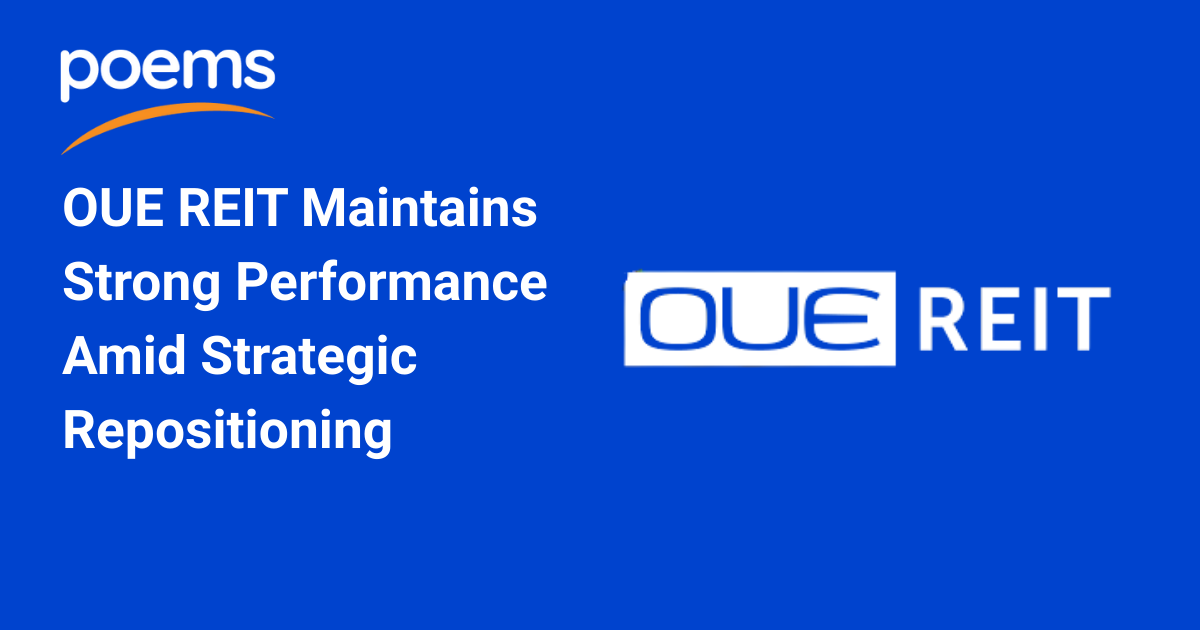
OUE REIT Maintains Strong Performance Amid Strategic Repositioning
Company Overview OUE REIT is a diversified real estate investment trust with a portfolio spanning office, retail, and hospitality segments. With assets in Singapore and international locations, the REIT is positioning itself as a key player in the commercial real estate sector. Strong Operational Performance Across All Segments OUE REIT continues to demonstrate robust performance across its three primary business segments. The office segment has particularly benefited from the ongoing flight-to-quality trend, which has driven impressive rental reversions of 9.3% in the third quarter of 2025. This trend reflects tenants' preference for premium office spaces, reinforcing the REIT's positioning in high-quality commercial properties. The retail segment has shown resilience through its unique food and beverage offerings and exposure to the ultra-luxury market. This strategic positioning has helped the segment maintain stable performance despite broader retail market challenges. Meanwhile, the hospitality segment presents an optimistic long-term outlook, supported by an attractive sponsor pipeline, increased efforts to secure MICE (meetings, incentives, conferences, and exhibitions) business, and active room rate management. Capital Reallocation and Growth Strategy A significant development for OUE REIT was the successful repatriation of S$318 million in net divestment proceeds from the sale of Lippo Plaza Shanghai. While the specific allocation of these funds are still under review, management has indicated that debt repayment will be prioritised, which should improve the REIT's gearing ratios. The organisation has also made notable progress on its acquisition strategy, actively screening investment opportunities in Japan and Australia. The REIT’s management has specifically highlighted Australia as the preferred market for office asset acquisitions, particularly Sydney’s office market's attractive characteristics, citing their limited supply and strong demand dynamics. Investment Recommendation Phillip Securities Research maintains a BUY recommendation for OUE REIT with an unchanged target price of S$0.40. The research house expects growth opportunities to primarily emerge from international acquisitions, particularly noting that the Sydney office segment represents a potentially compelling entry point given current market condition. Frequently Asked Questions Q: What is Phillip Securities Research's recommendation for OUE REIT? A: Phillip Securities Research maintains a BUY recommendation with a target price of S$0.40. Q: How much did OUE REIT receive from the Lippo Plaza Shanghai sale? A: OUE REIT received net divestment proceeds of S$318 million from the sale, which have been repatriated to Singapore. Q: What was the rental reversion performance in the office segment? A: The office segment achieved rental reversions of 9.3% in the third quarter of 2025. Q: Which markets is OUE REIT considering for future acquisitions? A: OUE REIT is screening opportunities in Japan and Australia, with Australia being the preferred market for office assets. Q: What factors support the retail segment's performance? A: The retail segment is supported by unique food and beverage offerings and exposure to the resilient ultra-luxury market. Q: What is driving the hospitality segment's positive outlook? A: The hospitality segment benefits from an attractive sponsor pipeline, efforts to secure more MICE business, and active room rate management. Q: How will the sale proceeds likely be used? A: While not finalised, priority will be given to debt repayment, which should improve the REIT's gearing ratios. Q: What makes the Sydney office market attractive for OUE REIT? A: The Sydney office segment offers limited supply and strong demand, creating a potentially compelling entry point for investment. This article has been auto-generated using PhillipGPT. It is based on a report by a Phillip Securities Research analyst. Reference URL https://www.poems.com.sg/stock-research/OUECR.SG/ Disclaimer These commentaries are intended for general circulation and do not have regard to the specific investment objectives, financial situation and particular needs of any person. Accordingly, no warranty whatsoever is given and no liability whatsoever is accepted for any loss arising whether directly or indirectly as a result of any person acting based on this information. You should seek advice from a financial adviser regarding the suitability of any investment product(s) mentioned herein, taking into account your specific investment objectives, financial situation or particular needs, before making a commitment to invest in such products. Opinions expressed in these commentaries are subject to change without notice. Investments are subject to investment risks including the possible loss of the principal amount invested. The value of units in any fund and the income from them may fall as well as rise. Past performance figures as well as any projection or forecast used in these commentaries are not necessarily indicative of future or likely performance. Phillip Securities Pte Ltd (PSPL), its directors, connected persons or employees may from time to time have an interest in the financial instruments mentioned in these commentaries. The information contained in these commentaries has been obtained from public sources which PSPL has no reason to believe are unreliable and any analysis, forecasts, projections, expectations and opinions (collectively the “Research”) contained in these commentaries are based on such information and are expressions of belief only. PSPL has not verified this information and no representation or warranty, express or implied, is made that such information or Research is accurate, complete or verified or should be relied upon as such. Any such information or Research contained in these commentaries are subject to change, and PSPL shall not have any responsibility to maintain the information or Research made available or to supply any corrections, updates or releases in connection therewith. In no event will PSPL be liable for any special, indirect, incidental or consequential damages which may be incurred from the use of the information or Research made available, even if it has been advised of the possibility of such damages. The companies and their employees mentioned in these commentaries cannot be held liable for any errors, inaccuracies and/or omissions howsoever caused. Any opinion or advice herein is made on a general basis and is subject to change without notice. The information provided in these commentaries may contain optimistic statements regarding future events or future financial performance of countries, markets or companies. You must make your own financial assessment of the relevance, accuracy and adequacy of the information provided in these commentaries. Views and any strategies described in these commentaries may not be suitable for all investors. Opinions expressed herein may differ from the opinions expressed by other units of PSPL or its connected persons and associates. Any reference to or discussion of investment products or commodities in these commentaries is purely for illustrative purposes only and must not be construed as a recommendation, an offer or solicitation for the subscription, purchase or sale of the investment products or commodities mentioned. This advertisement has not been reviewed by the Monetary Authority of Singapore.
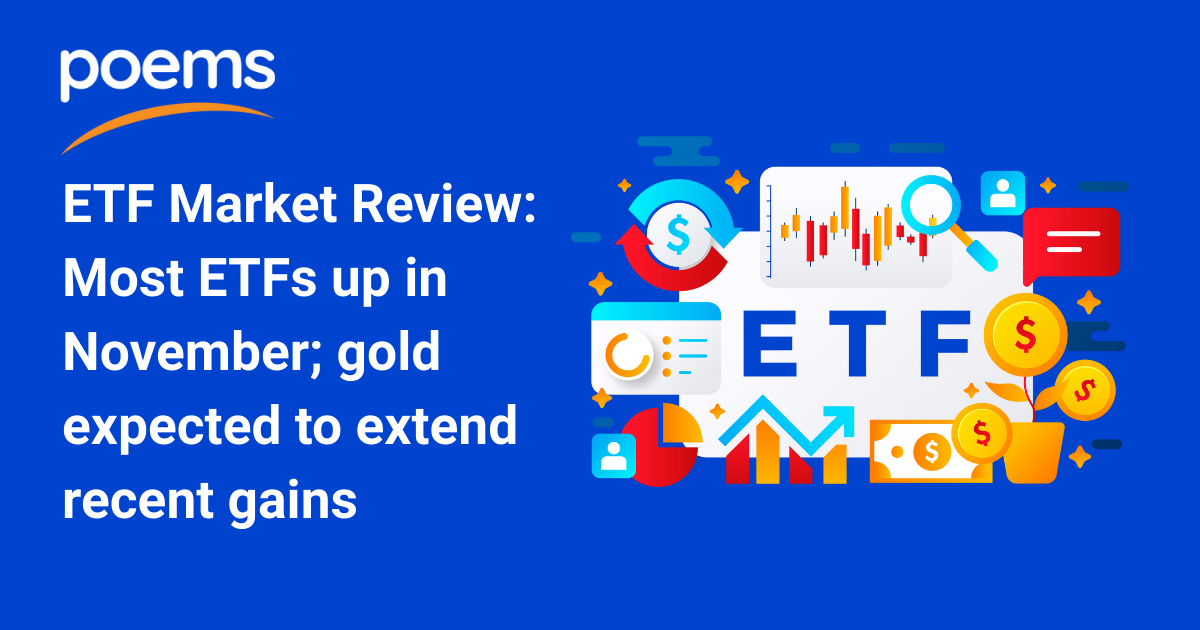
ETF Market Review: Most ETFs up in November; gold expected to extend recent gains
November Performance Overview The ETF market delivered mixed results in November, with most funds posting positive returns, though notable exceptions occurred. The standout performer was the oil-tracking ETF (XOP), which surged 5.6% during the month, benefitting from momentum in the energy sector. However, not all sectors shared this success: the Bitcoin-tracking ETF (BITO) declined 17.6%, while the Hang Seng Index ETF (HK.2828) declined 0.3%. Current Market Trends Analysis Technical analysis reveals distinct trend patterns across major asset classes heading into December. The S&P 500, US Treasury Bonds, Gold, and Singapore Equities are all maintaining strong upward trajectories, suggesting continued investor confidence in these sectors. Meanwhile, Oil and the Hang Seng Index have entered range consolidation phases, indicating potential sideways movement as markets digest recent gains and losses. Bitcoin stands out as the only primary asset class currently in a clear downtrend, reflecting ongoing volatility in the cryptocurrency space. December Market Expectations Looking ahead to December, market analysts anticipate divergent performance across ETF categories. Gold-tracking ETFs are expected to extend their recent gains, potentially benefitting from continued safe-haven demand and favourable macroeconomic conditions. This positive outlook for precious metals contrasts sharply with expectations for other major asset classes. Several prominent ETF categories, including those tracking the S&P 500, US Treasury Bonds, Bitcoin, and the Hang Seng Index, are projected to experience pullbacks in December. This anticipated correction may reflect profit-taking and seasonal market adjustments as investors reposition portfolios ahead of year-end. This article has been auto-generated using PhillipGPT. It is based on a report by a Phillip Securities Research analyst. Reference Material: https://www.poems.com.sg/stock-research/technical-analysis/etf-monthly-november-2025-gold-to-outperform-in-december/ Disclaimer These commentaries are intended for general circulation and do not have regard to the specific investment objectives, financial situation and particular needs of any person. Accordingly, no warranty whatsoever is given and no liability whatsoever is accepted for any loss arising whether directly or indirectly as a result of any person acting based on this information. You should seek advice from a financial adviser regarding the suitability of any investment product(s) mentioned herein, taking into account your specific investment objectives, financial situation or particular needs, before making a commitment to invest in such products. Opinions expressed in these commentaries are subject to change without notice. Investments are subject to investment risks including the possible loss of the principal amount invested. The value of units in any fund and the income from them may fall as well as rise. Past performance figures as well as any projection or forecast used in these commentaries are not necessarily indicative of future or likely performance. Phillip Securities Pte Ltd (PSPL), its directors, connected persons or employees may from time to time have an interest in the financial instruments mentioned in these commentaries. The information contained in these commentaries has been obtained from public sources which PSPL has no reason to believe are unreliable and any analysis, forecasts, projections, expectations and opinions (collectively the “Research”) contained in these commentaries are based on such information and are expressions of belief only. PSPL has not verified this information and no representation or warranty, express or implied, is made that such information or Research is accurate, complete or verified or should be relied upon as such. Any such information or Research contained in these commentaries are subject to change, and PSPL shall not have any responsibility to maintain the information or Research made available or to supply any corrections, updates or releases in connection therewith. In no event will PSPL be liable for any special, indirect, incidental or consequential damages which may be incurred from the use of the information or Research made available, even if it has been advised of the possibility of such damages. The companies and their employees mentioned in these commentaries cannot be held liable for any errors, inaccuracies and/or omissions howsoever caused. Any opinion or advice herein is made on a general basis and is subject to change without notice. The information provided in these commentaries may contain optimistic statements regarding future events or future financial performance of countries, markets or companies. You must make your own financial assessment of the relevance, accuracy and adequacy of the information provided in these commentaries. Views and any strategies described in these commentaries may not be suitable for all investors. Opinions expressed herein may differ from the opinions expressed by other units of PSPL or its connected persons and associates. Any reference to or discussion of investment products or commodities in these commentaries is purely for illustrative purposes only and must not be construed as a recommendation, an offer or solicitation for the subscription, purchase or sale of the investment products or commodities mentioned. This advertisement has not been reviewed by the Monetary Authority of Singapore.

Thai Beverage PLC: Challenging Operating Environment Amid External Pressures
Company Overview Thai Beverage PLC (ThaiBev) is a leading beverage company in Southeast Asia, operating primarily in the spirits and beer segments. The company maintains significant market positions in Thailand and Vietnam through its beer operations, while also commanding a strong presence in the regional spirits market. Below-Expectation Financial Performance ThaiBev's recent financial results fell short of analyst projections. For FY25, revenue reached only 92% of forecats, while profit after tax and minority interest (PATMI) came in at 86% of expectations. The company's spirits division was particularly weak in the second half of FY25, with PATMI declining 3% year over year. Most concerning was the sharp 11% year-over-year contraction in volumes during the fourth quarter of FY25. The primary driver behind this underperformance was the border dispute with Cambodia, which resulted in a massive exodus of migrant workers from Thailand. This development caused significant disruption to supply chains and contributed to a decline in volumes across ThaiBev's operations. Mixed Segment Performance Despite these challenges, ThaiBev's beer segment demonstrated resilience with strong earnings growth in the second half of FY25. This improvement was attributed to higher contributions from Thailand operations, which reduced minority-interest impacts, and by aggressive cost-cutting measures in distribution and administrative expenses. However, beer volumes still declined 1.2% year over year in 2H25, primarily due to weakness at Sabeco following price increases. Investment Outlook and Recommendation Phillip Securities Research maintains an ACCUMULATE recommendation for ThaiBev, while lowering the target price to S$0.53 from S$0.56. The revised valuation reflects a 22% reduction in FY26 earnings estimates due to lower revenue projections and a 12x FY26 price-to-earnings ratio, which aligns with the company’s four-year average forward PE. Despite significant forecast cuts, analysts expect earnings growth in FY26 as management is anticipated to align operating expenses with reduced volumes. The investment case is further supported by potential gross margin expansion opportunities driven by substantial declines in input costs, including packaging, malt, and molasses prices. However, ThaiBev continues to face a challenging consumer spending environment, recently exacerbated by flooding conditions that may further pressure near-term performance. This article has been auto-generated using PhillipGPT. It is based on a report by a Phillip Securities Research analyst. Reference link: https://www.poems.com.sg/stock-research/TBV.SG/ Disclaimer These commentaries are intended for general circulation and do not have regard to the specific investment objectives, financial situation and particular needs of any person. Accordingly, no warranty whatsoever is given and no liability whatsoever is accepted for any loss arising whether directly or indirectly as a result of any person acting based on this information. You should seek advice from a financial adviser regarding the suitability of any investment product(s) mentioned herein, taking into account your specific investment objectives, financial situation or particular needs, before making a commitment to invest in such products. Opinions expressed in these commentaries are subject to change without notice. Investments are subject to investment risks including the possible loss of the principal amount invested. The value of units in any fund and the income from them may fall as well as rise. Past performance figures as well as any projection or forecast used in these commentaries are not necessarily indicative of future or likely performance. Phillip Securities Pte Ltd (PSPL), its directors, connected persons or employees may from time to time have an interest in the financial instruments mentioned in these commentaries. The information contained in these commentaries has been obtained from public sources which PSPL has no reason to believe are unreliable and any analysis, forecasts, projections, expectations and opinions (collectively the “Research”) contained in these commentaries are based on such information and are expressions of belief only. PSPL has not verified this information and no representation or warranty, express or implied, is made that such information or Research is accurate, complete or verified or should be relied upon as such. Any such information or Research contained in these commentaries are subject to change, and PSPL shall not have any responsibility to maintain the information or Research made available or to supply any corrections, updates or releases in connection therewith. In no event will PSPL be liable for any special, indirect, incidental or consequential damages which may be incurred from the use of the information or Research made available, even if it has been advised of the possibility of such damages. The companies and their employees mentioned in these commentaries cannot be held liable for any errors, inaccuracies and/or omissions howsoever caused. Any opinion or advice herein is made on a general basis and is subject to change without notice. The information provided in these commentaries may contain optimistic statements regarding future events or future financial performance of countries, markets or companies. You must make your own financial assessment of the relevance, accuracy and adequacy of the information provided in these commentaries. Views and any strategies described in these commentaries may not be suitable for all investors. Opinions expressed herein may differ from the opinions expressed by other units of PSPL or its connected persons and associates. Any reference to or discussion of investment products or commodities in these commentaries is purely for illustrative purposes only and must not be construed as a recommendation, an offer or solicitation for the subscription, purchase or sale of the investment products or commodities mentioned. This advertisement has not been reviewed by the Monetary Authority of Singapore.
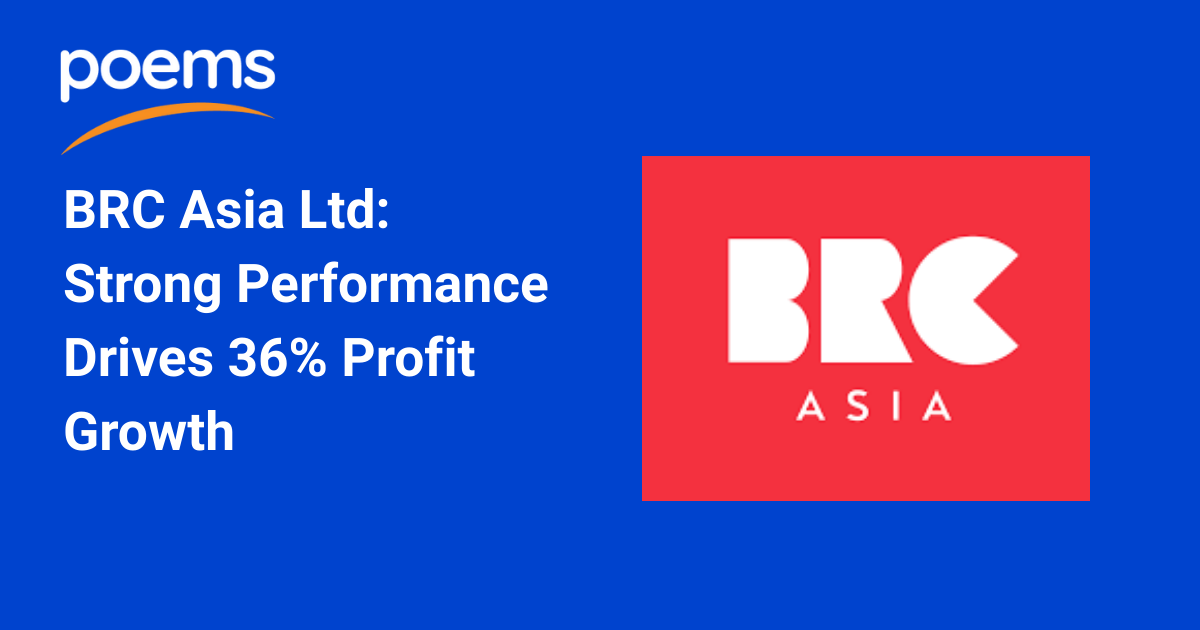
BRC Asia Ltd: Strong Performance Drives 36% Profit Growth
Company Overview and Market Position BRC Asia Ltd operates as a leading steel reinforcement solutions provider in the construction industry, specialising in steel rebar delivery and related services. The company serves as a critical supplier to Singapore's construction sector, supporting major infrastructure and residential development projects across the region. Strong Financial Performance Highlights BRC Asia delivered impressive financial results with adjusted profit after tax and minority interests (PATMI) surging 36% year-on-year in the second half of FY25. Full year revenue and adjusted PATMI came in at 96% and 101% of forecasts, respectively, demonstrating solid execution against expectations. Excluding the S$16.5 million disposal gains on associates from 2H24 and other one-off items, the underlying business performance showed remarkable strength. The standout performance was driven primarily by an estimated 34% year-on-year increase in steel rebar delivery volumes, marking the highest volume growth since 2H23. This surge reflects stronger construction project offtake across BRC Asia's key markets, indicating robust demand conditions in the construction sector. Robust Order Book Supports Future Growth BRC Asia's business outlook appears particularly strong, supported by a substantial S$1.9 billion order book. This represents a 36% year-on-year increase and is 42% above the company's five-year historical average. The significant boost stems from S$570 million in T5 contracts awarded during 3Q25, providing substantial revenue visibility for the coming periods. Steel rebar delivery volumes are expected to continue ramping up over subsequent quarters as project offtake strengthens, with peak volumes anticipated in 2026-27. Key growth drivers include HDB BTO buildout programmes, the T5 project ramp-up, and expansion contracts for the Marina Bay Sands Integrated Resort which are expected to be tendered to main contractors by year-end. Investment Recommendation and Valuation Phillip Securities Research has upgraded BRC Asia to BUY from NEUTRAL, raising the target price to S$5.10 from the previous S$4.10. The revision reflects a 15% increase in FY26 adjusted PATMI forecasts, driven by higher expected delivery volumes. The target price incorporates valuations rolled over to FY26/27, with weighted average cost of capital (WACC) and growth rate assumptions at 10% and 2.5% respectively. The stock also offers an attractive FY26 dividend yield of 4.8%, enhancing its investment appeal. This article has been auto-generated using PhillipGPT. It is based on a report by a Phillip Securities Research analyst. Reference link:https://www.poems.com.sg/stock-research/BRCC.SG/ Disclaimer These commentaries are intended for general circulation and do not have regard to the specific investment objectives, financial situation and particular needs of any person. Accordingly, no warranty whatsoever is given and no liability whatsoever is accepted for any loss arising whether directly or indirectly as a result of any person acting based on this information. You should seek advice from a financial adviser regarding the suitability of any investment product(s) mentioned herein, taking into account your specific investment objectives, financial situation or particular needs, before making a commitment to invest in such products. Opinions expressed in these commentaries are subject to change without notice. Investments are subject to investment risks including the possible loss of the principal amount invested. The value of units in any fund and the income from them may fall as well as rise. Past performance figures as well as any projection or forecast used in these commentaries are not necessarily indicative of future or likely performance. Phillip Securities Pte Ltd (PSPL), its directors, connected persons or employees may from time to time have an interest in the financial instruments mentioned in these commentaries. The information contained in these commentaries has been obtained from public sources which PSPL has no reason to believe are unreliable and any analysis, forecasts, projections, expectations and opinions (collectively the “Research”) contained in these commentaries are based on such information and are expressions of belief only. PSPL has not verified this information and no representation or warranty, express or implied, is made that such information or Research is accurate, complete or verified or should be relied upon as such. Any such information or Research contained in these commentaries are subject to change, and PSPL shall not have any responsibility to maintain the information or Research made available or to supply any corrections, updates or releases in connection therewith. In no event will PSPL be liable for any special, indirect, incidental or consequential damages which may be incurred from the use of the information or Research made available, even if it has been advised of the possibility of such damages. The companies and their employees mentioned in these commentaries cannot be held liable for any errors, inaccuracies and/or omissions howsoever caused. Any opinion or advice herein is made on a general basis and is subject to change without notice. The information provided in these commentaries may contain optimistic statements regarding future events or future financial performance of countries, markets or companies. You must make your own financial assessment of the relevance, accuracy and adequacy of the information provided in these commentaries. Views and any strategies described in these commentaries may not be suitable for all investors. Opinions expressed herein may differ from the opinions expressed by other units of PSPL or its connected persons and associates. Any reference to or discussion of investment products or commodities in these commentaries is purely for illustrative purposes only and must not be construed as a recommendation, an offer or solicitation for the subscription, purchase or sale of the investment products or commodities mentioned. This advertisement has not been reviewed by the Monetary Authority of Singapore.





